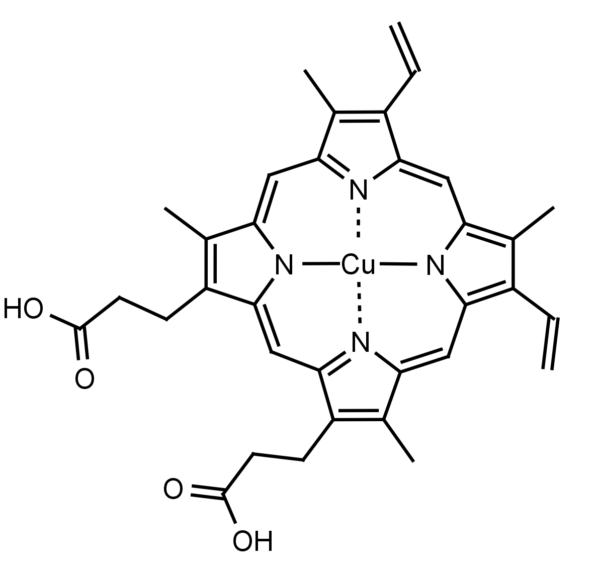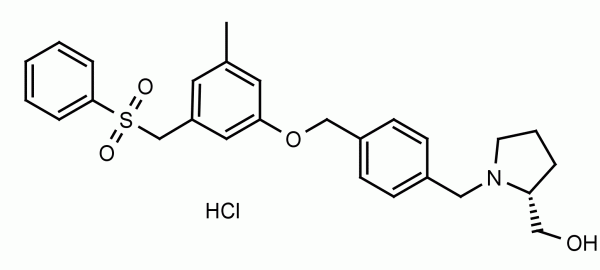Cu (II) Protoporphyrin IX does not inhibit heme oxygenase (the enzyme that catalyzes the conversion of heme to biliverdin in the heme degradation pathway) and is used as a negative control for Zn (II) Protoporphyrin (an inihibitor of heme oxygenase). Heme oxygenase has been implicated in tumor cell resistance to chemotherapy, reduction of free radical formation and inflammation, and associated with vascular repair.
References
1) Jozkowicz, A., H. Was, et al. (2007). “Heme oxygenase-1 in tumors: is it a false friend?” Antioxid Redox Signal 9(12): 2099-117.
2) Abraham, N. G. and A. Kappas (2005). “Heme oxygenase and the cardiovascular-renal system.” Free Radic Biol Med 39(1): 1-25.
3) Kim, D. H., A. P. Burgess, et al. (2008). “Heme oxygenase-mediated increases in adiponectin decrease fat content and inflammatory cytokines tumor necrosis factor-alpha and interleukin-6 in Zucker rats and reduce adipogenesis in human mesenchymal stem cells.” J Pharmacol Exp Ther 325(3): 833-40.





![Benzo[a]pyrene - Echelon Biosciences](https://www.echelon-inc.com/wp-content/uploads/2019/07/1452.gif)